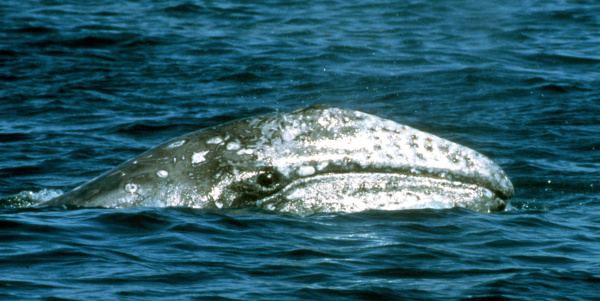GRAY WHALE – PHOTO BY LAURA FRANCIS, CINMS
Here’s another good reason to eat a variety of foods – the varied diet of the California gray whale has helped the large mammal survive the 40 previous major cycles of global warming, and cooling, says U.C. Berkeley scientists.
Analyzing how the gray whale survive the changes over the past 120,000 years, researchers recently posted the findings in the online Journal PLoS One; they also say they found enough evidence to conclude that in the past the number of whales along the Pacific Coast was about two to four times today’s population of roughly 22,000.
(Whale numbers dipped to 1,000 in the early 20th century because of unchecked whaling.)
The grays had higher populations in the deep past mainly because they took advantage of the food sources around them, say the researchers who are seeing whales eating advantageously today. Gray whales were once thought to feed only by suctioning sediment and filtering out unwanted critters, hence the name “Bottom Feeders,” but some whales are now eating herring and krill, just like their baleen whale relatives.
More surprising is that today some whales are refusing to make their annual migration to Mexico for breeding, preferring instead to hangout year-round off Vancouver Island scooping up mouthfuls of the delicious herring and krill.
Saying that the grays appear to have “a lot more evolutionary plasticity than anyone imagined,” the researchers suspect that these whales will best ride out the expected sea level rise and other climate changes that will take place in the next few years.
We normally don’t like to hear the word “plastic” and “whale” in the same sentence, but in this instance, we’ll take it…

